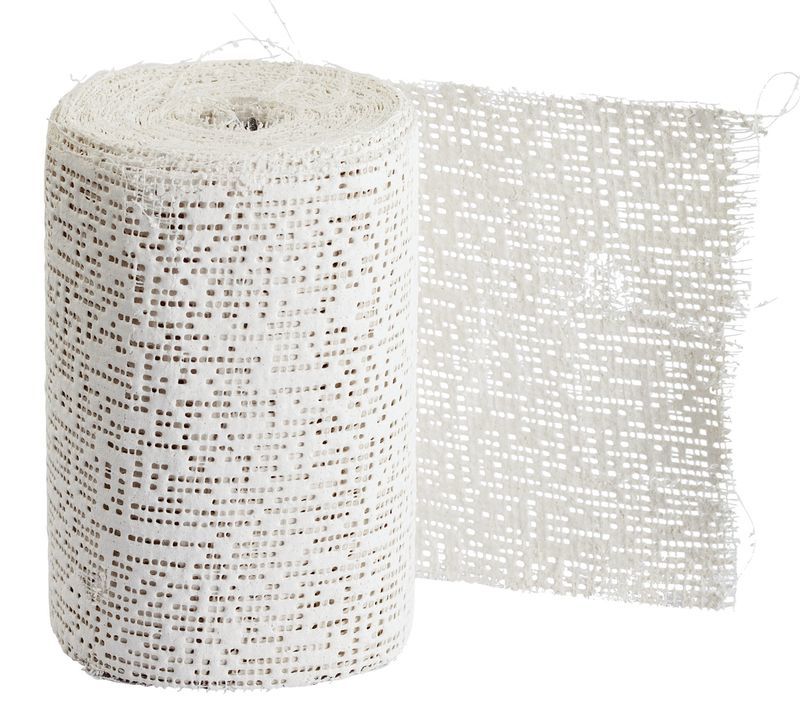

- #Plaster bandage manufacturer serial#
- #Plaster bandage manufacturer skin#
- #Plaster bandage manufacturer iso#
As is well known, the ultimate strength of a plaster of Paris cast is seriously affected by any excess water used and consequently the addition to the bandage of the correct amount of water is a matter of considerable P4 importance. Furthermore, by tightly winding such bandages in a roll, the quantity of water taken up by the bandage can be to some extent controlled. Such a bandg age has obvious advantages over the loose plaster type, in that dusting, settling and loss of the plaster is minimized. In the second type, or so called hard-coated bandages, plaster of Paris is held on the gauze by means of an adhesive or binder. Considerable plaster is also likely to be lost at this point and it is difficult to control such loss. This uneven distribution tends to make the even application of the plaster quite difficult. Furthermore, when wetted prior to application in the usual manner by setting the roll on one end in a body of water, the plaster tends to fall to one end of the roll.

This results not only in the loss of the plaster but is also a source of annoyance, particularly when such plasters are used in the home or a surgeon's office. The plaster dusts out of such rolls with comparative ease when they are handled. One in which loose plaster of Paris is spread as evenly as possible on starch or glue sized or unsized gauze and the gauze is then rolled as compactly as possible. Two types of bandages containing plaster of Paris have heretofore been used for the application of surgical casts.
#Plaster bandage manufacturer serial#
The present 3 application is a continuation in part of my copending application Serial No. Avoid creating an overly thick cast.This invention relates to the preparation of plaster of Paris bandages for surgical or other uses and consists in a novel process of preparing non-dusting bandages of this nature. In most circumstances, three layers are enough. Note that the plaster will not get lost even if the bandage is squeezed. Afterwards, using your thumb and forefinger, squeeze the bandage to get rid of most moisture. Hold the bandage slanted about 45°, and immerse the bandages in the water for 3 to 5 seconds only. On average, using the proper method of application, it takes 3 to 8 minutes for the plaster to harden depending if the bandage is normal-setting or fast-setting.

When setting the plaster bandage, use clean tap water in 22°– 25☌ (72° – 77° F). Plaster bandages remain the most common method of protecting orthopedic fractures due to the rigid structure and ease of application. Our bandage is highly moldable with short water immersion and setting time for our fast-setting XtraGuard product series. When the bandage is exposed to water, a chemical reaction occurs that hardens the plaster. Plasters of Paris are widely used in hospitals and clinics for orthopedic purposes to protect and immobilize a broken limb.

If you have allergic reactions such as itchiness or rashes, immediately stop the use of the bandage and contact your doctor. The plaster bandage is not a commonly known allergen, however, depending on the sensitivity of the person, it may cause allergic reaction.
#Plaster bandage manufacturer skin#
StayGuard plaster bandages are latex-free to avoid allergic reaction or skin irritation. Available in various sizes and as normal-setting and fast-setting, our plaster bandages ensure maximum strength, durability, and a smooth cast finish as the premium plaster adheres closely to the gauze with minimal plaster loss. Plaster of Paris Bandages are made from premium medical-grade orthopedic plaster to protect and facilitate recovery from bone fractures. Plaster bandages are often chosen over other options due to their durability and firm cast-formation. The plaster bandages are mainly used to protect and immobilize a broken limb. Plaster of Paris is a non-stretch impregnated gauze cloth containing plaster of paris crystal powder.
#Plaster bandage manufacturer iso#
AdvaCare is a CE, ISO and USFDA manufacturer of Plaster of Paris.


 0 kommentar(er)
0 kommentar(er)
